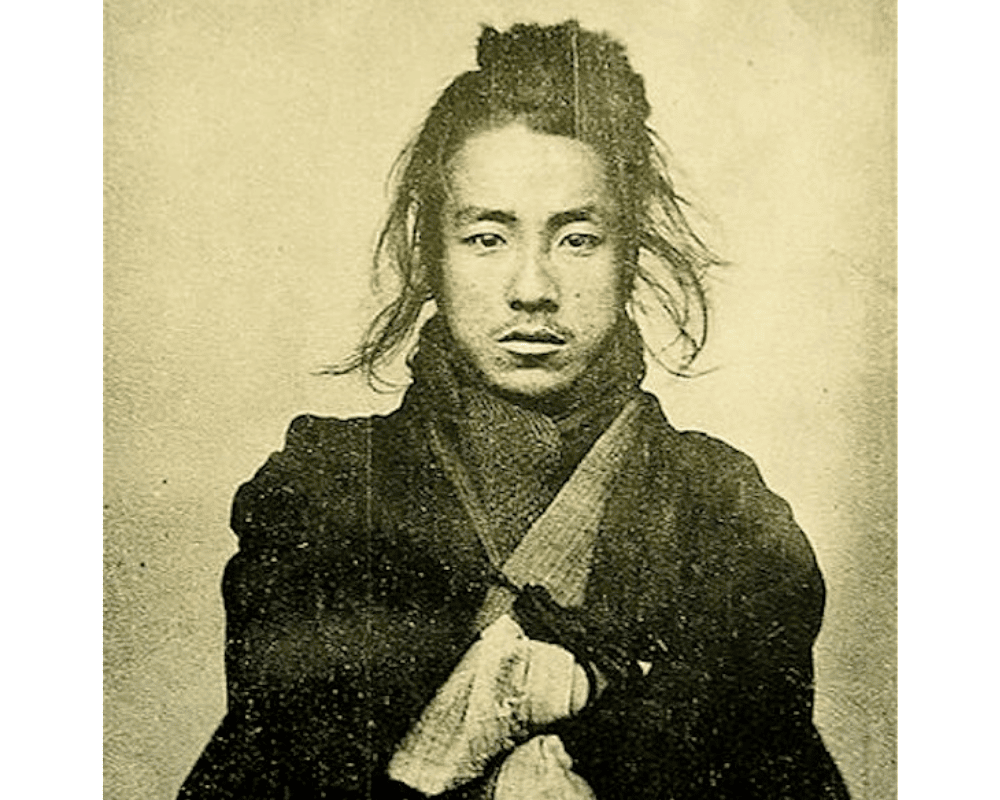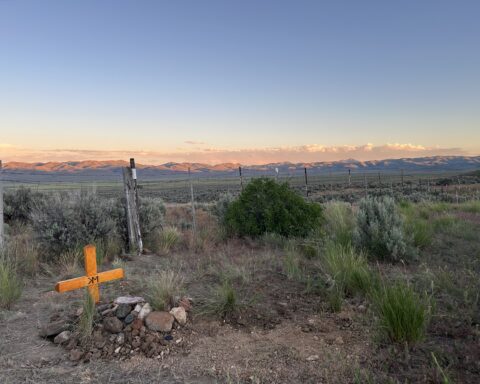After actor Sam Corlett shared what he learned from exploring the role of Norse adventurer Leif Erikson in Netflix’s ‘Vikings: Valhalla’, we examine the wisdom to be gleaned from other historical brotherhoods.
Samurais
The Samurai (or bushi) were warriors of premodern Japan, hired by wealthy landowners who had become independent of central government and employed them for their personal protection. Growing from a small group, they eventually became the highest ranking social caste of the Edo period (1603-1867). They used an array of weapons but their main symbol and weapon was, of course, the sword. Samurai were guided to lead their lives according to the ethical code of bushido — “the way of the warrior.” They were staunchly Confucian in nature, believing in loyalty to one’s master, self-discipline and respectful, ethical behavior, and were also influenced by Zen Buddhism.
The seminal book on the Samurai is ‘Hagakure’, meaning ‘Hidden by the Leaves’, and is a practical and spiritual guide for a warrior, drawn from a collection of commentaries by Yamamoto Tsunetomo, a samurai who worked under his lord Nabeshima Mitsushige. It is sometimes said that bushido is really the ‘Way of Dying’, meaning that by having a constant awareness of one’s death, one can achieve a transcendent state of freedom, thus urging us to ponder our mortality in order to live a more meaningful life.
“Throughout your life advance daily, becoming more skillful than yesterday, more skillful than today. This is never-ending.” –Yamamoto Tsunetomo
Native Americans
Native American people, also referred to as the indigenous peoples of the Americas, are the inhabitants of the Americas before the arrival of the Europeans in the 15th century. Comprised of a multitude of varying tribes, they are traditionally known as hunter gatherers. In addition to this, many practiced aquaculture, agriculture, created monumental architecture, and had great knowledge in a vast amount of subjects including engineering, mathematics, astronomy, physics, medicine, geology, irrigation, and much more.
Deeply connected and showing reverence to the earth, the sky, nature, spirit, and all living things, they continue to contribute a massive amount of knowledge, culture, and wisdom on how to live with dignity, respect, honor, and peace. Their percipience and insight into the fundamental truths of life are expressed in a multitude of idioms and proverbs which can help the lost find sure-footing and inspire faith to carry on, their circumspection perhaps born of enduring great hardship and bloodshed at the hands of the European colonists.
‘‘Don’t be afraid to cry. It will free your mind of sorrowful thoughts.” -Hopi
Vikings
As this week’s interviewee Sam Corlett (pictured above in his role as Leif Erikson in Netlfix’s Viking: Valhallah) informed us, there’s far more to the Vikings than the caricature often presented in folklore.
Yes, the Norsemen were great warriors on the battlefields, masters of the seas and skilled navigators. Yes, they were great traders, often driven away from home by a lack of farmland, an expanding population and political strife arising from the unification of Norway. It’s also true that almost the entire population of Scandinavia was pagan at the beginning of the Viking Age, which lasted from 793 until 1066 when King Harald Hardrada was defeated by the English in the bloody battle at Stamford Bridge. Indeed, the Vikings worshipped many gods and thus it wasn’t a problem for them to accept the Christian god alongside their own, following their conflict with the English. They were deeply spiritual, had an unwavering belief in the afterlife and revered the virtues of Old Norse philosophy which included the tenets of independence, loyalty, hospitality, generosity, compassion, courage and most importantly, wisdom. They were far more sophisticated in thought than history has given them credit, and independence was not just sought materially, but in actuality, through both thought and action too. They proved fearless in both their faith and in their actions.
“Better to fight and fall than to live without hope.” -Norse mythology
Shaolin monks
Bodhidharma was a fabled Buddhist monk who lived during the 5th and 6th centuries, and is traditionally credited with being the transmitter of Buddhism to China and its first Chinese patriarch (though there’s little evidence to support such.) According to Chinese legend, he began the physical training of the monks of Shaolin temple in Henan province, that led to the creation of Shaolin kung fu which is practiced to this day. It combines Ch’an philosophy and the strict discipline of martial art mastery whereby the monks, some of whom may enter the mastery at the tender age of three, use Qi Gong and a special method of breathing with the lower body to transform their bodies into armor, which in turn allows them to withstand powerful blows, including those from dangerous and sometimes sharp objects. Using meditation techniques, they learn how to control their energy force known as Chi which takes incredible discipline and awareness and thus by cultivating their inner calmness, they are able to ward off mental, physical, and emotional stress and injury.
While Shaolin monks seem to achieve the impossible, they have simply developed their minds and bodies in ways that allow them to perform extraordinary feats of mental and physical strength by tapping into their internal energy and physical conditioning. Predominantly a discipline for the mind and body, detailed 16th century sources confirm that in 1553, Wan Biao, Vice Chief of the Nanjing Chief Military Commission, initiated the conscription of warrior monks to fight off pirates who raided China’s eastern and south eastern coasts on an unprecedented scale. The monks participated in at least four battles and on 21st July 1553, 120 warrior monks led by the Shaolin monk Tianyuan defeated a group of pirates chasing the survivors over ten days and twenty miles. The pirates suffered over one hundred casualties and the monks only four.
“A Buddha is someone who finds freedom in good fortune and bad.” –Bodhidharma
Stoics
Although not known as physical warriors (except for Marcus Aurelius who was engaged in warfare when he wrote ‘Meditations’) the Stoics were warriors of the philosophical battlefields of the mind.
Stoicism is a school of Hellenistic philosophy founded in Athens, Greece, by Zeno of Citium, in the early 3rd century BC and flourished in both the Roman and Greek world until the 3rd century AD. It is a philosophy of personal virtue and ethics informed by a system of logic and its views on living in accordance to the natural world. The Stoics identified the path to ‘eudaimonia’ (literally translated as ‘good spirit’- commonly translated as ‘happiness’ or ‘welfare’) as being one of asserting the practice of cardinal virtues and espoused that external things such as health, wealth, and pleasure are not good nor bad in themselves but have value as material for virtue to act upon. The Stoics also held that certain destructive emotions resulted from errors of judgement and believed that people should aim to maintain a will that is in accordance with nature. They saw that the best indication of an individual’s philosophy was not what a person said but how a person behaved. Believing that ‘virtue is sufficient for happiness’, the more contemporarily well known Stoics such as Seneca, Epictetus and perhaps the Stoic superstar, Emperor of Rome, Marcus Aurelius, believed that it was (and remains) essential to live wisely, keeping a calm and rational mind, refusing to be cast down, alarmed or have one’s peace disturbed over things for which we have no control. And in recent years, the quotes of Stoicism has taken front seat as go-to guidance for ‘keeping calm and carrying on.’
“If you are distressed by anything external, the pain is not due to the thing itself, but to your estimate of it: and this you have power to revoke at any moment.” -Marcus Aurelius








